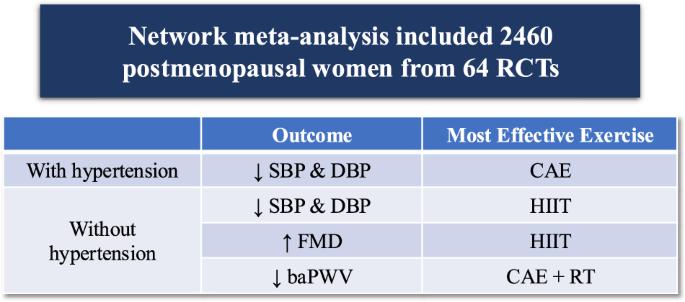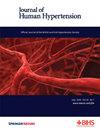不同运动方式对绝经后妇女动脉硬化危险因素的影响:系统综述和网络荟萃分析。
IF 3.4
4区 医学
Q2 PERIPHERAL VASCULAR DISEASE
引用次数: 0
摘要
动脉硬化是绝经后老年妇女发展为心血管疾病的最常见疾病之一。早期改变不良的生活方式选择和积极管理风险因素可以提高绝经后妇女的生存率。一项网络荟萃分析比较了不同运动模式对绝经后妇女动脉硬化危险因素的影响。主要终点是收缩压和舒张压,而次要终点包括血流介导的舒张(FMD)、肱-踝脉波速度(baPWV)和总胆固醇/高密度脂蛋白。在10个数据库(PubMed、Cochrane Library、Embase、Web of Science、EBSCO、CNKI、SinoMed、VIP、万方数据和万方医学在线)中检索了运动对绝经后妇女动脉硬化影响的随机对照试验。最终纳入64项研究(2460名参与者)。在绝经后高血压妇女中,持续有氧运动(CAE)在降低收缩压和舒张压方面最有效。在没有高血压的患者中,高强度间歇训练在降低血压和增加FMD方面最有效,而CAE联合阻力训练在降低baPWV方面最有益。绝经后妇女的运动处方应根据自己的血压状况量身定制,确保选择最适合自己的运动方式,使干预效果最大化。试验注册号:PROSPERO,注册号:CRD42022337536。本文章由计算机程序翻译,如有差异,请以英文原文为准。

Effects of different exercise modes on the risk factors of arteriosclerosis in postmenopausal women: A systematic review and network meta-analysis
Arteriosclerosis is one of the most common diseases that progresses to cardiovascular disease in ageing postmenopausal women. Early changes away from the poor lifestyle choices and the active management of risk factors can improve the survival of postmenopausal women. A network meta-analysis was performed to compare the effects of different exercise modes on the risk factors for arteriosclerosis in postmenopausal women. The primary outcomes were systolic and diastolic blood pressure, whereas the secondary outcomes included flow-mediated dilation (FMD), brachial-ankle pulse wave velocity (baPWV), and total cholesterol/high-density lipoprotein. Randomised controlled trials on the effects of exercise on arteriosclerosis in postmenopausal women were identified in 10 databases (PubMed, Cochrane Library, Embase, Web of Science, EBSCO, CNKI, SinoMed, VIP, Wanfang Data, and Wanfang Med Online). Sixty-four studies (2460 particpants) were eventually included. Among postmenopausal women with hypertension, continuous aerobic exercise (CAE) was most effective in reducing systolic and diastolic blood pressure. Among those without hypertension, high-intensity interval training was the most effective in lowering blood pressure and increasing FMD, whereas CAE combined with resistance training was most beneficial in reducing baPWV. Exercise prescriptions for postmenopausal women should be tailored according to their blood pressure status to ensure the selection of the most suitable exercise modality and to maximize the effectiveness of the intervention. Trial registration: PROSPERO, registration number: CRD42022337536.
求助全文
通过发布文献求助,成功后即可免费获取论文全文。
去求助
来源期刊

Journal of Human Hypertension
医学-外周血管病
CiteScore
5.20
自引率
3.70%
发文量
126
审稿时长
6-12 weeks
期刊介绍:
Journal of Human Hypertension is published monthly and is of interest to health care professionals who deal with hypertension (specialists, internists, primary care physicians) and public health workers. We believe that our patients benefit from robust scientific data that are based on well conducted clinical trials. We also believe that basic sciences are the foundations on which we build our knowledge of clinical conditions and their management. Towards this end, although we are primarily a clinical based journal, we also welcome suitable basic sciences studies that promote our understanding of human hypertension.
The journal aims to perform the dual role of increasing knowledge in the field of high blood pressure as well as improving the standard of care of patients. The editors will consider for publication all suitable papers dealing directly or indirectly with clinical aspects of hypertension, including but not limited to epidemiology, pathophysiology, therapeutics and basic sciences involving human subjects or tissues. We also consider papers from all specialties such as ophthalmology, cardiology, nephrology, obstetrics and stroke medicine that deal with the various aspects of hypertension and its complications.
 求助内容:
求助内容: 应助结果提醒方式:
应助结果提醒方式:


